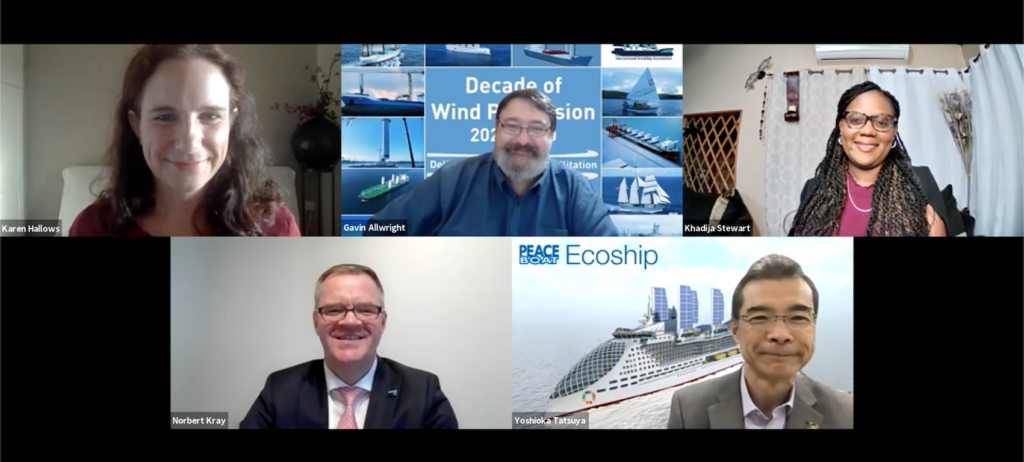A Transition Model for the Decarbonization of the Maritime Sector: Ecoship at the UN Sustainable Transport Conference
Peace Boat was honoured to hold an official side event on Ecoship at the second United Nations Global Sustainable Transport Conference held in Beijing. “Ecoship: A Transition Model for the Decarbonization of the Maritime Sector”, focused on the conference theme of “Sustainable transport and green development: climate change mitigation, adaptation and resilience”, specifically climate change mitigation through decarbonisation of the maritime sector.

Ecoship Founder and Director, Yoshioka Tatsuya demonstrated how Ecoship, Peace Boat’s project to build the world’s most sustainable cruise ship, will drive momentum as a transition model for the maritime sector. Citing Secretary General Antonio Guterres’ call for emissions from the shipping sector to be zero by 2050, Yoshioka stressed that urgent action needs to be taken. Ecoship will reduce carbon emissions through energy efficiency and renewable energies. 6,000 m2 of solar panels will cover 100% of the ship’s lighting needs and Ecoship will be fitted with 10 retractable sails with flexible solar panels. Sailing into 100 ports yearly on global voyages, Ecoship will be a very visible example of what is possible in the maritime sector.
A key message of the event was the importance of wind propulsion. Gavin Allwright, Secretary General of the International Windship Association welcomed those attending to the “Decade of Wind Propulsion”. He predicted that there could be up to 10,000 ships having some form of wind propulsion by 2030. Wind is zero emission and can provide 5-20% of propulsion energy on a retrofit. Moreover, if wind is placed at the centre of decarbonisation, it has the potential to cover the cost of all other technology and fuel development.
Norbert Kray, Senior Vice President, Regional Manager Greater China, DNV, spoke about sustainable solutions in the maritime sector. Except for the electrification underway in the ferry segment, the alternative fuels are currently still mainly fossil-based and are dominated by LNG. He said there will be demonstration projects for onboard use of hydrogen and ammonia by 2025, paving the way for zero-carbon ships, and these technologies will, according to DNV estimates, be ready for commercial use in four to eight years. The development of efficient safety regulations and guidelines is fundamental to evolve from large-scale demonstration to commercial use.
Khadija Stewart spoke about her experience as a participant in Peace Boat’s Ocean and Climate Youth Ambassador Program which brings youth leaders from Small Island Developing States (SIDS) onboard Peace Boat’s existing passenger ship for capacity training and to share their message about the impact on their communities with citizens and government representatives in the countries visited and at the UN. With programs like this, Ecoship will be a tool for advocacy and education as well as a transition model for the maritime sector.